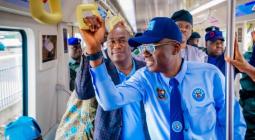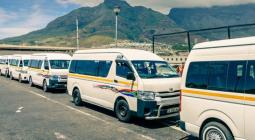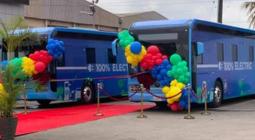Africa’s biggest city is nervous about a Chinese-built metro system
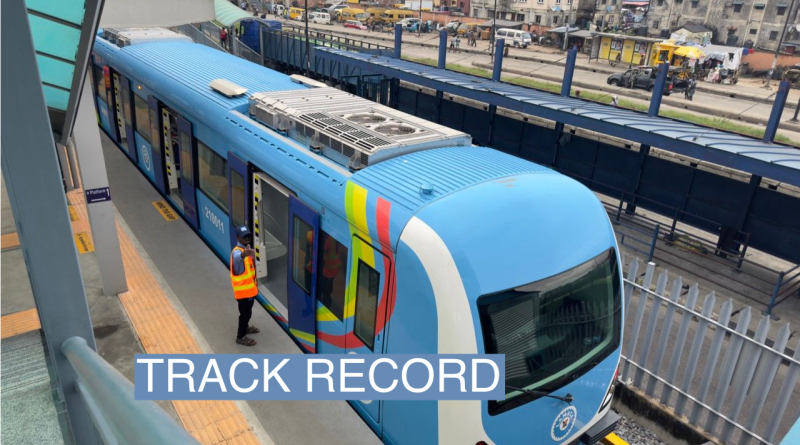
LAGOS — A new Lagos train service will need to buck the trend of poor maintenance that has blighted other Chinese-funded mass transit projects in Africa in order to provide a long-term solution to the Nigerian megacity’s infamous transport problems.
The Blue Line, built by China Civil Engineering Construction Corporation, has been used by 20,000 passengers since launch on Sept. 4, according to Lagos state’s transport agency, LAMATA. It runs between two terminals that link a busy suburb on the city’s mainland to a marina district notable for its cluster of highrise bank offices and proximity to affluent neighborhoods.
Lagos bustles with the energy of 20 million residents, thousands of small businesses and big corporations that power Africa’s biggest economy, itself being one of the continent’s largest by gross domestic product ($75 billion in 2021). But despite bridges built to connect both sides of the lagoon that splits the city, the city is typically congested at peak hours, stifling easy movement and limiting its and Nigeria’s development.
A full ride across the new train’s eight-mile stretch costs 750 naira ($1) and lasts 28 minutes including 90-second stops at three stations in between. Oluwabusola, 25, a physiotherapist, hopes to travel to work each day using the train because it more than halves her journey time by road and is also cheaper. “It will pain me if it suddenly becomes unavailable,” she said. That anxiety was reflected by other passengers who recounted a familiar arc of big money infrastructure projects in Nigeria: from enthusiasm to disappointment. “We are good at copying Western innovation but not their maintenance,” said Damian Olisa, a 49-year-old shoe vendor taking his first ride.
KNOW MORE
The Lagos train launch comes at a time when transport fares have risen sharply nationwide after President Bola Tinubu ended a longstanding fuel subsidy scheme in June. Higher fuel prices have meant fewer cars and reduced traffic, but the need for intra-city trains has been part of the state’s plans since the early 1980s.
The Blue Line is the first phase of a rail network that authorities hope will cover the breadth of the city. It is expected to bypass potholed expressways and inadequate road networks to improve access to key areas located far from the city center, like the Lekki Deep Sea Port — a $1.5 billion, 90-hectare processing facility that Nigeria expects will generate $360 billion in 45 years. The port, which is owned by China Harbour Engineering Company and Singapore’s Tolaram Group, opened in April.
ALEXANDER’S VIEW
The broad subtext to concerns over Lagos’s new train service is that attempts elsewhere did not live up to initial hype and cost. “Maintenance is going to be critically important and it’s something many African governments have struggled with after Chinese-built infrastructure is handed over,” Eric Olander, editor-in-chief of the China-Global South project, told Semafor Africa.
Many of those projects have been built by companies affiliated to Beijing’s state owned China Railway Construction Corporation (CRCC) whose projects in Africa include a rail line connecting Tanzania and Zambia.
In Nigeria’s capital, Abuja, a 17-mile light rail service that cost $823 million has not moved any passengers since March 2020. Such misadventures put the spotlight on the Lagos line which, despite significant adoption in its first weeks, has underwhelmed in at least one respect. After several delays that have seen it open more than 10 years later than originally planned, the supposedly electric-powered trains have so far been powered by a diesel system.
Authorities say the diesel operation is temporary and that tests are ongoing to potentially “energize” the tracks with electricity within a month. A spokesman for LAMATA declined to discuss maintenance plans for the train service citing confidentiality and security implications. He said an operating arm of the Chinese contractor that built the trains will be in charge of maintaining it “to international standards.”
While the prospects of electric-powered trains are positive in terms of being much more carbon-friendly than diesel powered, it does raise concerns about the ability to maintain electric power in a city known for regular and widespread power outages.
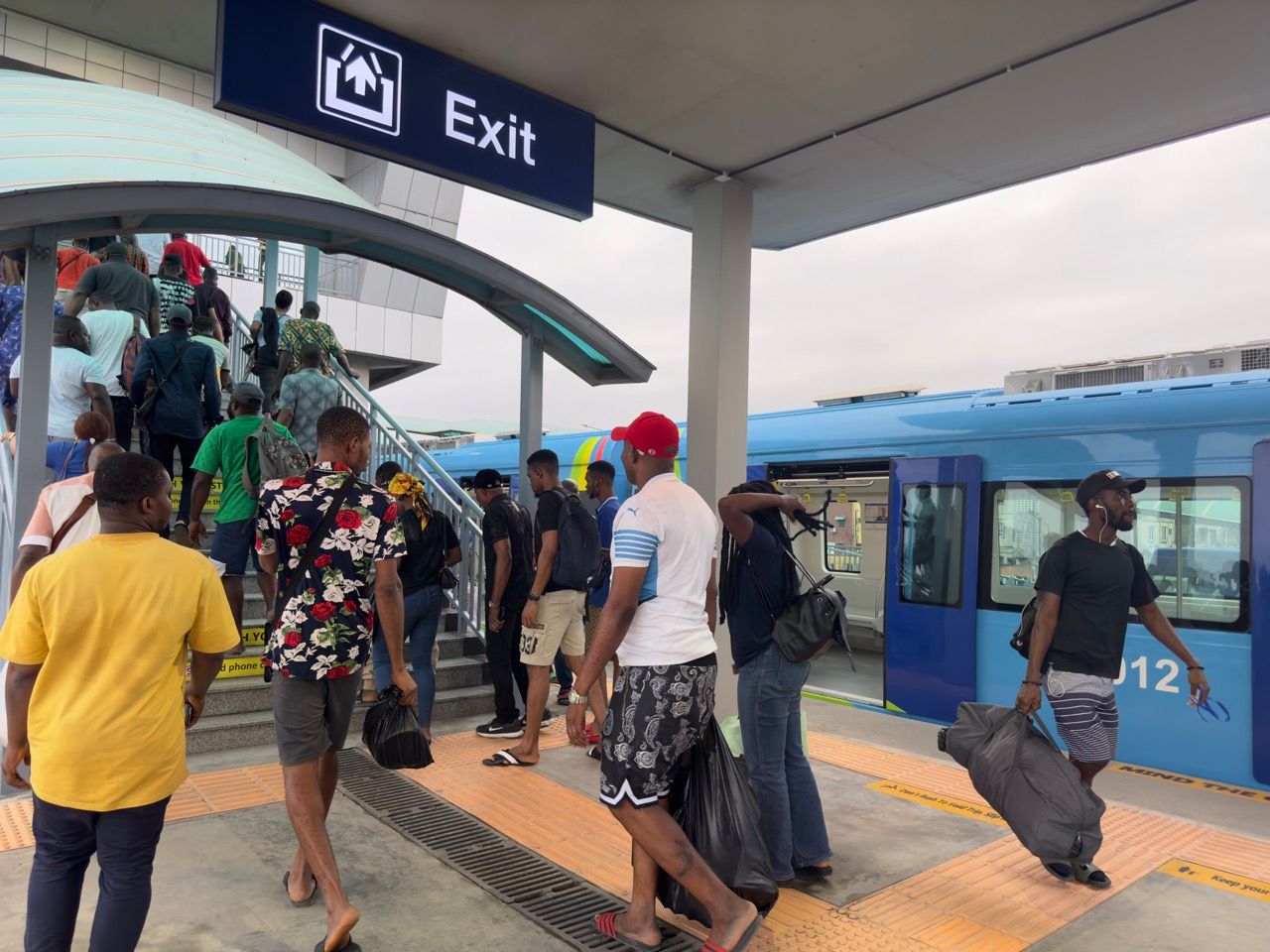
ROOM FOR DISAGREEMENT
John Ashbourne, an emerging markets economist at London-based firm Fitch Solutions, said a difference between the train service in Lagos and the neglected one in Abuja is that the latest line seems to have “a huge demand for it.”
How much Lagos will have to depend on China for spare parts will become clearer in two or three years but “this company builds a lot of high quality infrastructure in China and other countries so I don’t think we should assume that because they are involved, these projects will necessarily run into obstacles,” Ashbourne said of the contractor behind the Lagos rail. “I would hope that part of the contract for this project would include building up local capacity to maintain it.”
THE VIEW FROM ADDIS ABABA
A 20-mile line in Ethiopia’s capital Addis Ababa that was partly funded by China’s Export Import bank and hailed as Africa’s first electrified light rail system is now a cautionary tale. Having opened in 2015, only a fifth of its 41 trains are still operational requiring a $60 million makeover. It switched to running on alternate days last year.
One factor that led to the problems in Addis Ababa is the fact that maintenance is only carried out by Chinese engineers, which means locals have not developed the expertise needed to fix problems, one economist told Semafor Africa. Another factor is that Ethiopia lacks the spare parts needed for maintenance and does not have the foreign exchange to import them.
NOTABLE
A standard gauge railway that connects Kenya’s largest cities, Nairobi and Mombasa, was built in 2017 by China. It has become “a fiasco, the target of lawsuits, criminal investigations over corruption and resentment by environmentalists,” reports the New York Times.
Photo: Alexander Onukwue/Semafor


